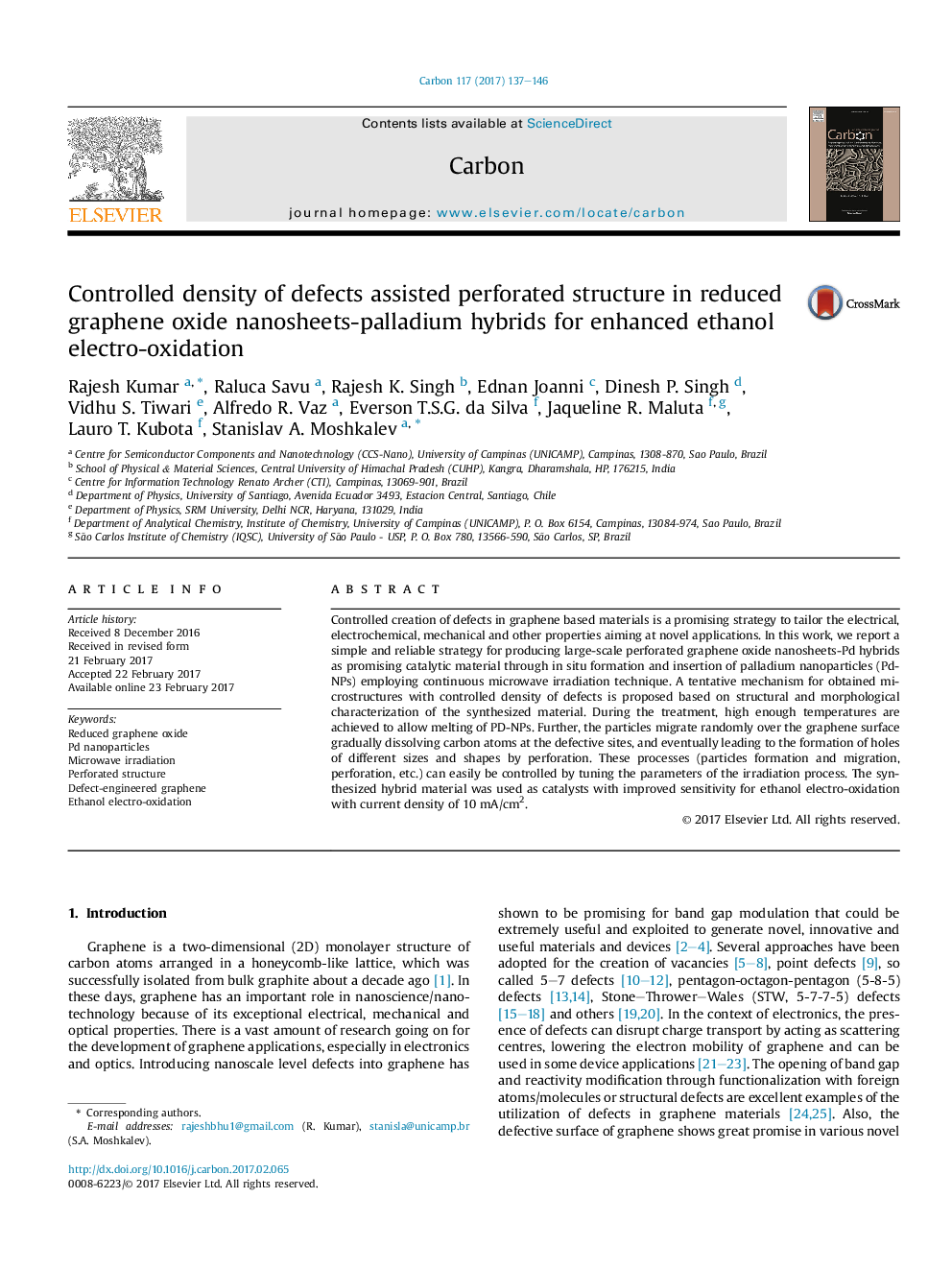| Article ID | Journal | Published Year | Pages | File Type |
|---|---|---|---|---|
| 5432351 | Carbon | 2017 | 10 Pages |
â¢We report a simple and reliable strategy for producing large-scale perforated graphene oxide nanosheets-Pd hybrids.â¢The promising catalytic material was formed in-situ by microwave irradiation induced insertion of Pd nanoparticles.â¢A tentative mechanism for obtained microstructures is proposed based on structural and morphological characterization.â¢The as obtained hybrid material shows improved catalytic activity with better sensitivity for ethanol electro-oxidation.
Controlled creation of defects in graphene based materials is a promising strategy to tailor the electrical, electrochemical, mechanical and other properties aiming at novel applications. In this work, we report a simple and reliable strategy for producing large-scale perforated graphene oxide nanosheets-Pd hybrids as promising catalytic material through in situ formation and insertion of palladium nanoparticles (Pd-NPs) employing continuous microwave irradiation technique. A tentative mechanism for obtained microstructures with controlled density of defects is proposed based on structural and morphological characterization of the synthesized material. During the treatment, high enough temperatures are achieved to allow melting of PD-NPs. Further, the particles migrate randomly over the graphene surface gradually dissolving carbon atoms at the defective sites, and eventually leading to the formation of holes of different sizes and shapes by perforation. These processes (particles formation and migration, perforation, etc.) can easily be controlled by tuning the parameters of the irradiation process. The synthesized hybrid material was used as catalysts with improved sensitivity for ethanol electro-oxidation with current density of 10Â mA/cm2.
Graphical abstractSchematic drawing of the mechanism responsible for the formation of perforated rGONSs-Pd nanoparticles hybrid structures.Download high-res image (245KB)Download full-size image
